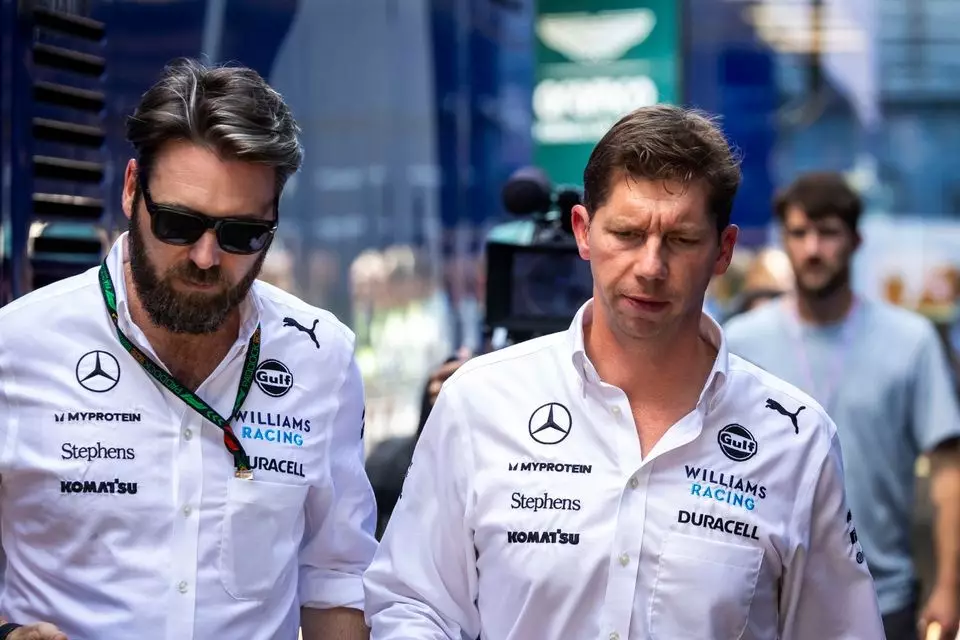James Vowles, team principal of Williams Racing, has delineated a challenging path for the 2025 Formula 1 season as the team prepares for a significant change in technical regulations slated for 2026. The overhaul will see F1 cars adopt smaller dimensions, lighter weights, and simplified aerodynamics, aiming to enhance competition and reduce reliance on high downforce configurations, which have characterized recent seasons. For Williams, a team that has struggled to make a mark since 2017—aside from a controversial finish in the 2021 Belgian Grand Prix—this upcoming season poses a strategic dilemma that requires balancing present performance with future potential.
Under the ownership of Dorilton Capital, Williams has regained some financial footing after years of hardship under the Williams family. With new investments pouring in, the team is working to not only improve its competitive standing but also to modernize its facilities. However, Vowles warns that this progress comes at a price. He has made it clear that the focus for 2025 will likely not result in immediate gains on the track, indicating that the team may have to accept a regression in performance metrics to better prepare for the impending regulatory changes.
Vowles’ candid acknowledgment of a potentially “hard year” ahead for Williams highlights a pragmatic acceptance of current limitations. He conveyed in an interview with Autosport that both drivers, Alex Albon and Carlos Sainz, are aligned with this strategy, emphasizing that sacrifices in performance this coming season could facilitate a stronger return in 2026. The aim, as Vowles outlined, is to invest strategically in development that might not yield immediate results but will be crucial as the team adapts to the forthcoming regulations.
Interestingly, Vowles expressed optimism about the team’s performance trajectory following the competitive 2023 season, where they narrowly surpassed AlphaTauri in the constructors’ championship. Although the team struggled initially in the current season, it found its footing during pivotal races in Monza and Baku, where both drivers demonstrated improved performance. This accomplishment stemmed from a lighter and more agile FW46, which suggests that Williams is already on the right path to reclaiming some semblance of competitiveness. Nonetheless, the team must remain focused on the long game, prioritizing preparation for 2026 over immediate glory.
A significant aspect of Vowles’ vision for the Williams team involves an experimental approach to development. He advocates for a “trial-and-error” philosophy, believing that rapid innovation is necessary to keep pace with advancements from rival teams. This mindset is refreshing, considering the often-cautious nature of car development in Formula 1, where teams frequently opt for incremental improvements over potentially risky moves. Vowles is not afraid to acknowledge that, despite the risks involved in pursuing ambitious technological leaps, the team cannot afford to remain stagnant if it hopes to leapfrog others in the future.
He emphasized the importance of learning through mistakes, suggesting that the team should not shy away from failures as long as they provide valuable insights that can accelerate growth. This innovative culture is vital in a landscape as competitive as F1, where teams must continuously evolve to remain relevant. Vowles’ commitment to fostering an environment that encourages experimentation could prove pivotal as Williams transitions into a new era.
While the optimism exhibited by Vowles is commendable, it must be tempered with realism. The intricacies of F1 regulation changes are unpredictable and can present unforeseen challenges. The team’s capacity to adapt to the new regulations in 2026 will largely depend on how effectively they address the learning curves presented in 2025. Vowles recognizes this, indicating that the demands placed on the organization will require exceptional effort and innovation.
The road ahead for Williams F1 is one littered with both challenges and opportunities. Acknowledging that 2025 might not be a banner year, the team is determined to use it as a foundation for future success. With a strategic focus on developing the right tools for 2026 and an innovative approach to problem-solving, they aim to return to their former glory while navigating the complexities of Formula 1’s ever-evolving environment. Only time will tell whether this vision culminates in a resurgence of the storied team, but the foundation for change has certainly been laid.


Leave a Reply